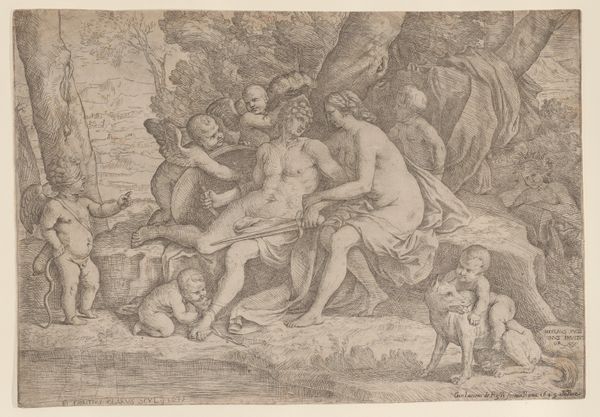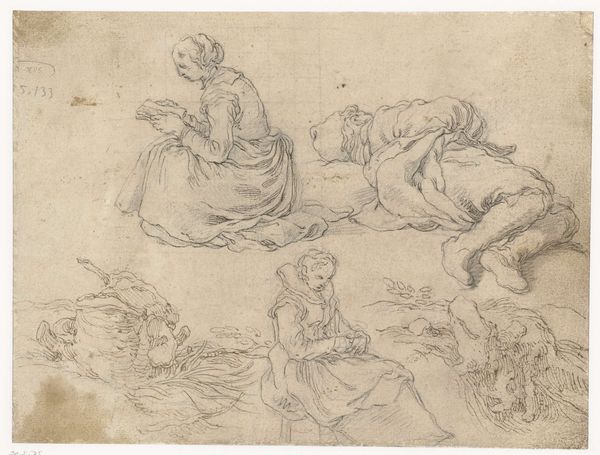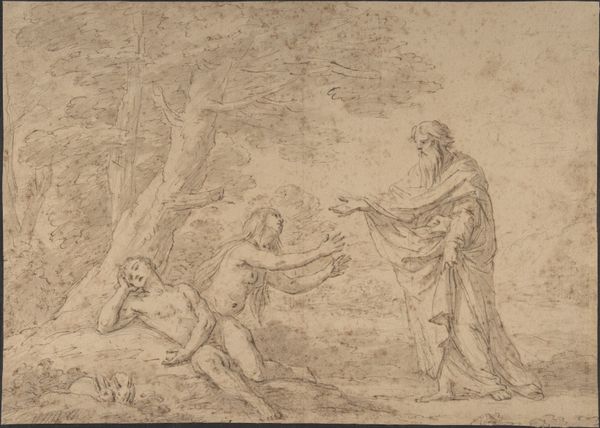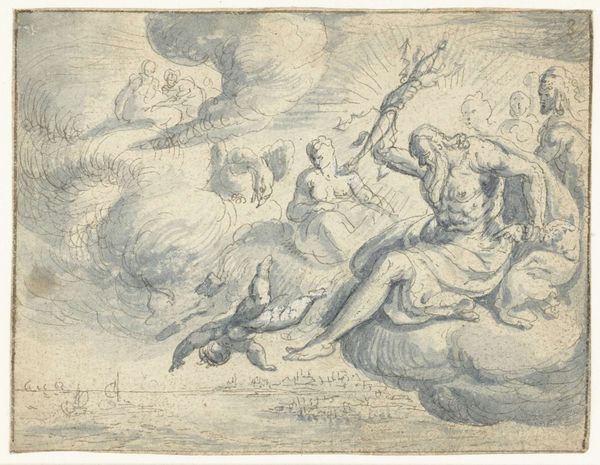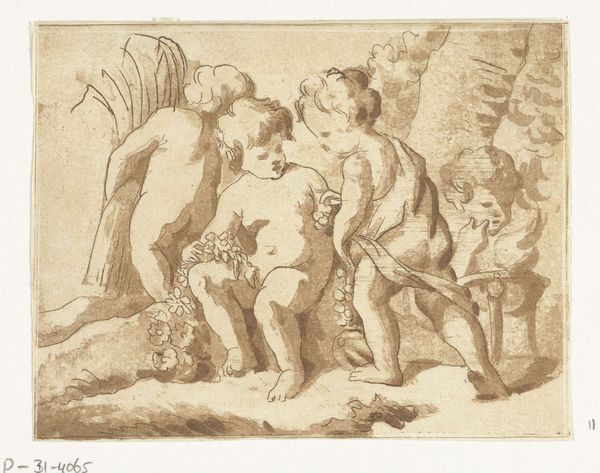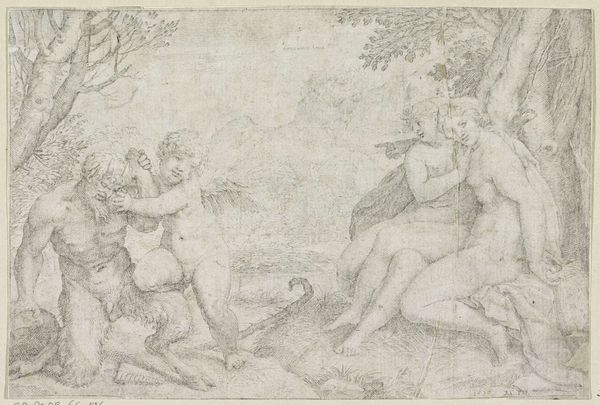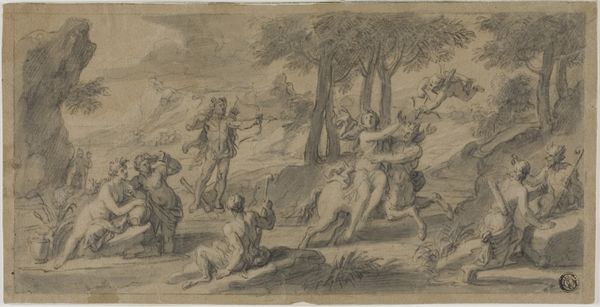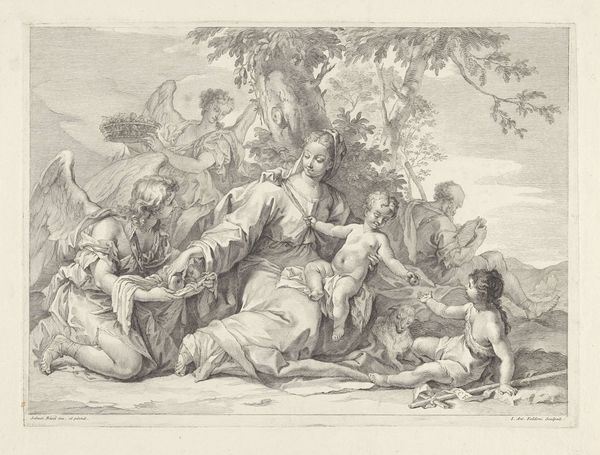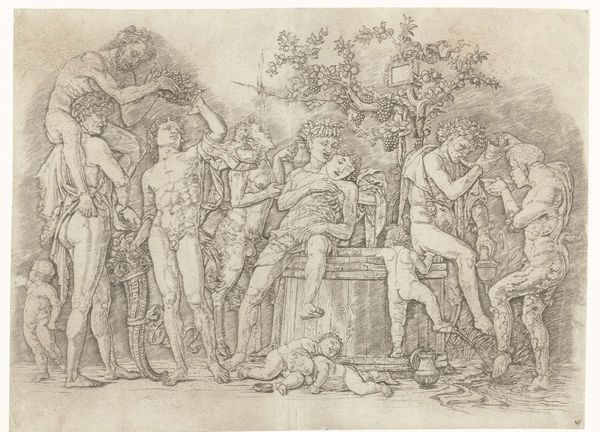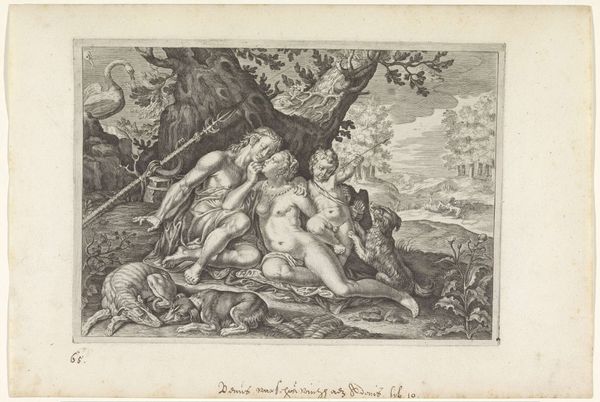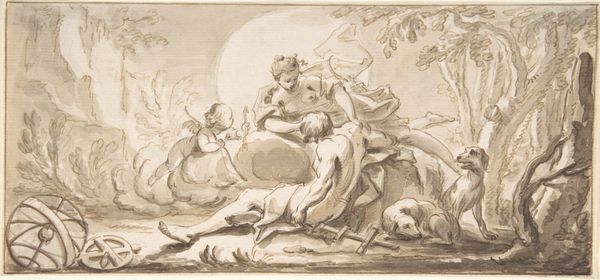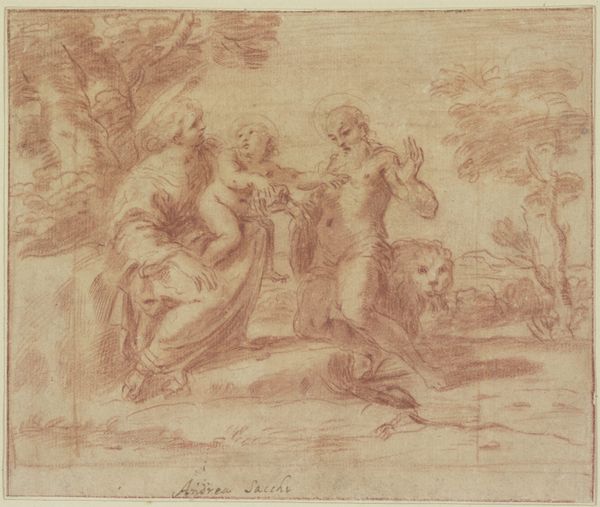
drawing, ink, pen
#
drawing
#
ink drawing
#
baroque
#
pen sketch
#
pencil sketch
#
landscape
#
figuration
#
ink
#
pen
#
history-painting
Dimensions: height 229 mm, width 319 mm
Copyright: Rijks Museum: Open Domain
Curator: Welcome! We’re standing before Abraham Bloemaert's "Diana en Endymion," an ink and pen drawing completed in 1649. It resides here at the Rijksmuseum. What are your first impressions? Editor: There's a dreamy quality to the lines. They almost float. It feels less like a definitive statement and more like a thought caught in mid-air, skillfully rendered with ink and pen. Curator: It certainly embodies a specific moment, doesn't it? Bloemaert utilizes the imagery of Diana, the moon goddess, gazing upon the sleeping Endymion. Note her chariot, subtly sketched above, pulled by swans, symbols deeply connected with light and love. Editor: Swans for light and love, yes, but also lunar power! The recurring imagery of the moon—the chariot, Diana herself—imbues this work with a deep connection to cycles of nature and female divinity. I also find the cupid in the middle remarkable. Curator: Precisely! And consider the relationship Bloemaert, who trained with his father as a sculptor, establishes between high art and what was deemed craft. The accessibility of ink and pen as materials, their portability, democratize the act of artmaking. A sheet of paper becomes the ground for exploring classical mythology. Editor: Interesting! The rough paper surface further complicates the image. This work reminds viewers about ancient symbols. Notice how Endymion lies in a deep, eternal sleep induced by Diana so she can visit him nightly. Eternal slumber, undying love, a goddess's privilege. What price do we mortals pay to encounter divinity? Curator: And the price Bloemaert paid—metaphorically speaking—in terms of materials? The readily available tools suggest an impulse, a need to capture the vision quickly. It’s about accessibility of production too! It is far from, say, large-scale canvas and paints accessible by those able to produce in grand studios, in centers of trade. The ink captures the image in motion, but, the image could also serve as an aid for painting. Editor: Indeed. The act of mark-making itself is powerful. He understood this drawing’s ability to hold symbolic weight across centuries, right? We still connect with these ideas of beauty, of love, of a night sky whispering promises. Bloemaert captures that whisper beautifully with such minimal means. Curator: Exactly. This quick sketch and classical, universal story still has power, regardless of what material means created it. Thank you for unveiling additional insights! Editor: It’s a shared pleasure; the drawing allowed me to interpret various angles within the artist's narrative.
Comments
No comments
Be the first to comment and join the conversation on the ultimate creative platform.
